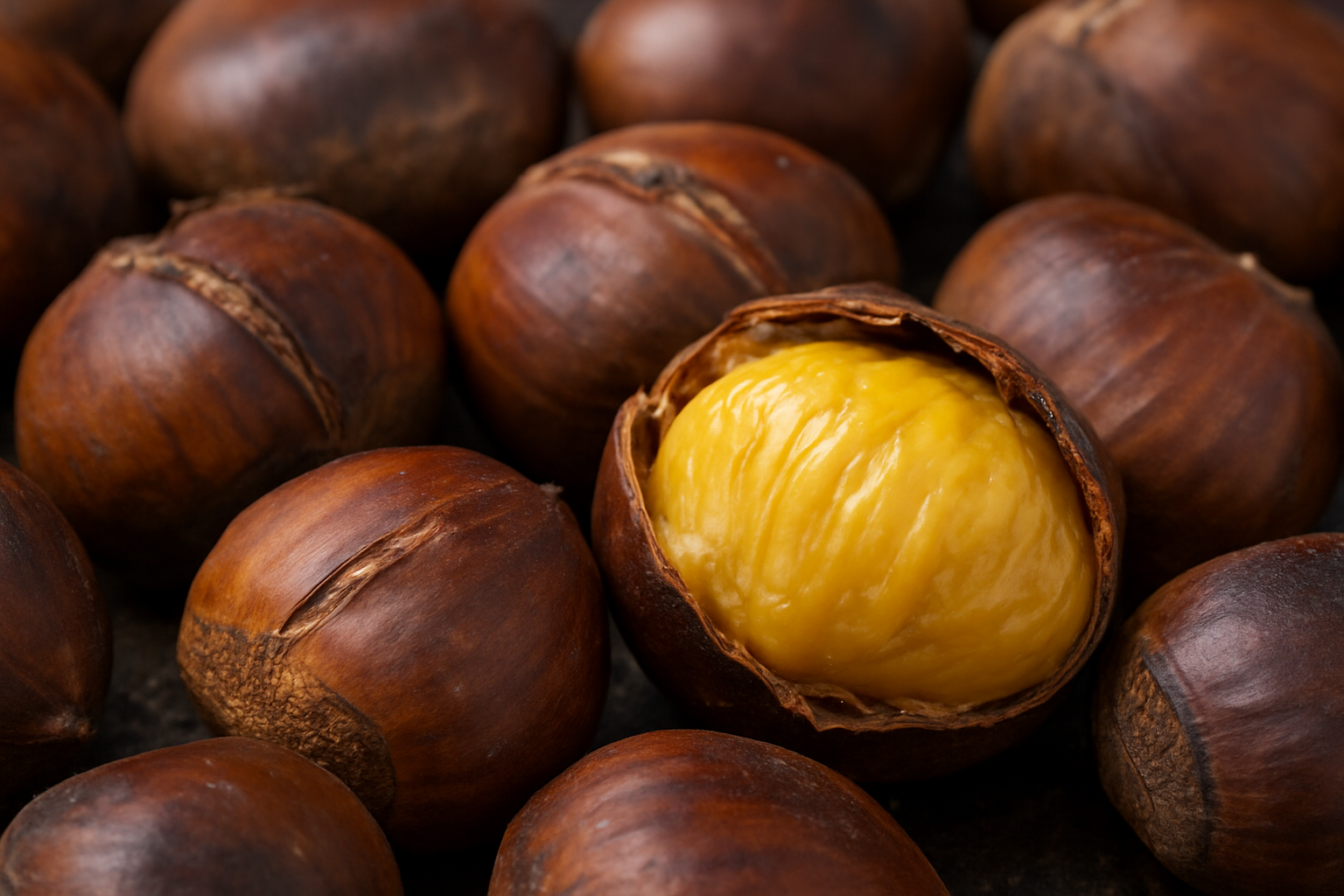1. Chestnuts: A Carbohydrate Food, Not a Nut
Although often thought of as nuts, chestnuts are fundamentally different from other nuts, which are mostly fat. The main component of chestnuts is ‘carbohydrate (starch).’ Therefore, a person with diabetes should think of chestnuts not as almonds or walnuts, but as small potatoes or sweet potatoes, and control their portion size accordingly.
2. The Effect of Roasting
– Moisture Evaporation and Sugar Concentration: During the high-heat roasting process, the moisture inside the chestnut evaporates. However, the carbohydrates and sugars within it remain, becoming concentrated in a smaller volume. This is why roasted chestnuts taste sweeter than steamed ones.
– Change in Glycemic Index (GI): Furthermore, the roasting process can change some of the starch structure into a more easily digestible form. This is a factor that increases the glycemic index. The same principle applies to why a baked sweet potato has a much higher GI than a steamed one.
3. Conclusion
Therefore, even if you eat the same number of chestnuts, ‘roasted chestnuts,’ which have become more concentrated in sugar and easier to digest through roasting, can raise blood sugar faster and higher than ‘steamed chestnuts.’ ‘Less moisture’ does not mean it is better for blood sugar. On the contrary, the concentrated carbohydrates can be more harmful.
If you want to eat chestnuts, it is slightly more advantageous for blood sugar management to steam or boil them rather than roasting. Regardless of the method, the most important thing is to control the portion to no more than 5-6 nuts at a time.
Summary: During the roasting process, chestnuts lose moisture and their sugar content becomes concentrated, which can cause them to raise blood sugar higher than the same number of steamed chestnuts. Therefore, people with diabetes should be even more cautious when consuming roasted chestnuts.


Leave a Reply